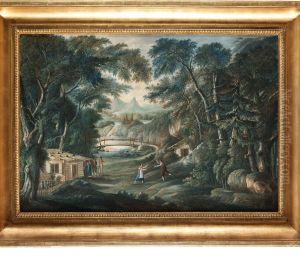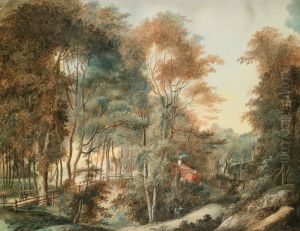Axel Fredrik Cederholm Paintings
Axel Fredrik Cederholm was a Swedish artist born on December 23, 1753, in a time when Sweden was undergoing significant changes, both politically and culturally. His life spanned the late Rococo period and the early years of the Neoclassical movement, and he was active during a transformative period in European art. Unfortunately, Axel Fredrik Cederholm is not among the most well-documented artists of his time, and as a result, detailed information about his life and works is somewhat scarce.
Cederholm was primarily known as a portrait painter, a genre that was particularly popular among the nobility and the growing middle class during the 18th century. Portrait painting was a means for these social classes to convey their status, wealth, and power. In this context, Cederholm would have worked to capture not only the likeness of his subjects but also the cultural and personal attributes that his clientele wished to project.
During his career, Cederholm would have been influenced by the shifting artistic trends of his time. The Rococo style, characterized by its ornate and decorative qualities, was giving way to Neoclassicism, which looked back to the art and culture of ancient Greece and Rome for inspiration. This transition often led to a more restrained and formal aesthetic in portraiture, emphasizing simplicity and clarity.
Cederholm's work as a portraitist would have involved capturing the individual characteristics of his sitters while also adhering to the artistic conventions of the time. His paintings would likely have included the typical attributes of portraiture of the period, such as attention to clothing and the inclusion of objects that represented the sitter's profession or interests.
Unfortunately, specific details about Cederholm's training, his major works, and his influence on Swedish art are not well-recorded in historical sources. As a result, his contribution to the art world is not as prominently recognized as that of some of his contemporaries. Nevertheless, as an artist working during an important period in the development of European art, Cederholm would have been part of the broader tapestry of cultural and artistic production of his time.
Axel Fredrik Cederholm passed away in 1824. The lack of extensive records on his life and work means that his legacy is not as visible as that of other artists from the same period. However, any surviving works attributed to him would provide valuable insight into the artistic practices and social customs of 18th-century Sweden.

